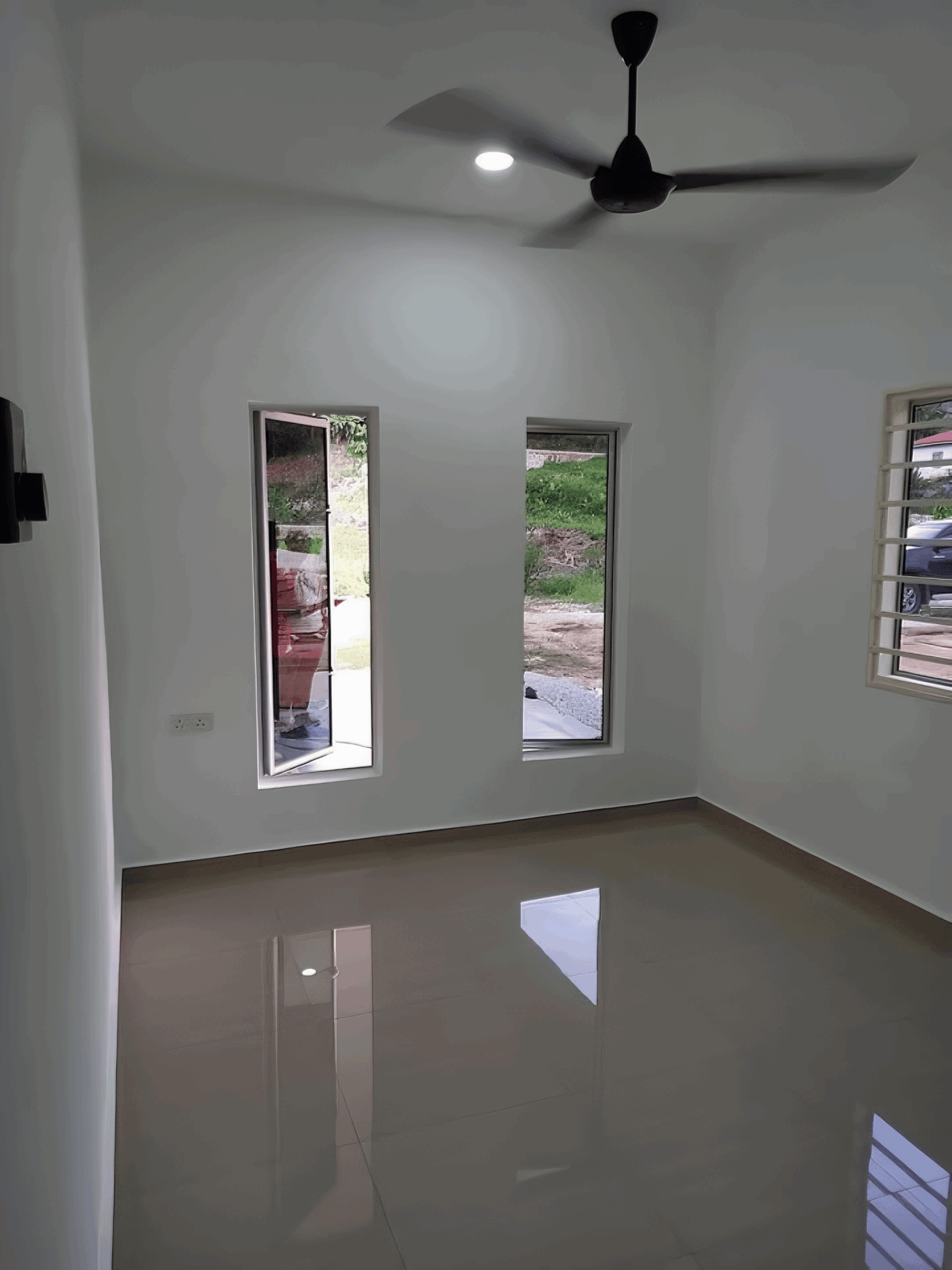6 Construction Loan Secrets Banks Don’t Want You to Know | RumahHQ

Hey there! Thinking about building your dream home or starting that long-awaited project? Well, you might want to dive into the world of construction loans. They can be a fantastic way to finance your plans, but let’s be real—getting a loan isn’t always as straightforward as it seems. Banks might not tell you everything you need to know to get the best deal. In this article, we’re going to unveil “6 Construction Loan Secrets Banks Don’t Want You to Know.” From hidden fees to insider tips on approval, we’re here to arm you with the info to help you make smarter choices. So grab your coffee and let’s get into the nitty-gritty of construction financing!
Unveiling the Hidden Costs of Construction Loans
When you’re diving into the world of construction loans, it’s easy to get swept up in the excitement of financing your dream build. But wait! Before you sign that dotted line, it’s crucial to peek behind the curtain and uncover the hidden costs that banks often keep under wraps. It’s not just about the interest rates and monthly repayments; there are several other sneaky expenses that can inflate your budget.
First off, consider the appraisal fees. Banks want to ensure your property is worth what they’re lending, so they usually charge for an appraisal. This often gets overlooked during the planning stages but can range anywhere from a few hundred to over a thousand ringgit! Moreover, another hidden cost comes from loan origination fees — it’s how banks make money just for processing your loan application. It can surprise borrowers when they see that fee listed on the closing statement, especially since it can add up to 1% or more of the total loan amount!
don’t forget about contingency reserves. Many banks require you to set aside a portion of your construction funds for unexpected costs, which means less cash flow for you. Not to mention, there might be insurance requirements that bump up your overall expenses, such as construction insurance or even private mortgage insurance if you don’t put down enough equity. All these little fees add up, making it critical to budget wisely and ask questions before you commit!

Understanding Loan Structures to Maximize Your Funds
When looking at construction loans, understanding the different loan structures can seem a bit overwhelming, but it doesn’t have to be. The way these loans are structured can significantly impact how much you end up paying in interest, as well as how accessible your funds will be as your project progresses. One key tip is to explore whether a fixed or variable interest rate works best for your financial situation. Investigating options such as interest-only payments during the construction phase may also help in keeping your costs manageable.
Another important aspect to consider is the disbursement schedule of the loan. Lenders typically disburse funds in stages, as construction milestones are reached. Here are some things to keep in mind when examining disbursement schedules:
- Milestone-Based Payments: Payments are made at different stages of the project, such as foundation completion or roofing.
- Draw Requests: You’ll need to submit requests for funds as each milestone is achieved, which can be time-consuming.
- Contingency Funds: Some loans may allow for additional funds in case of unexpected costs, which can be crucial.
Lastly, don’t forget to factor in any hidden fees associated with your loan. Banks sometimes have specific fees related to loan origination, processing, or even early repayment penalties. It’s always a good idea to have a clear understanding of these costs before committing to a loan. A simple table can help summarize this information:
| Fee Type | Approximate Cost |
|---|---|
| Loan Origination Fee | 1% of loan amount |
| Processing Fee | RM 1,000 – RM 3,000 |
| Early Repayment Penalty | Varies (check with lender) |

Navigating the Approval Process with Insider Tips
When diving into the construction loan approval maze, it’s all about knowing the game. Banks may play it close to their chest, but with a few insider tips, you can sail through the process like a pro. One key aspect is to understand the loan types. Each bank offers various options tailored to different projects. Do your homework on terms, interest rates, and flexibility. Often, a quick discussion with your bank can reveal lesser-known programs that align better with your needs.
Documentation is king, and this can make or break your application. Have your paperwork ready, and then some! Banks prefer if you present:
- Detailed project plans
- A realistic budget, including potential cost overruns
- Proof of previous construction experience, if applicable
This helps build your credibility in the eyes of the lender. Plus, make sure your financial records are in tip-top shape. The more transparent you are, the more likely the bank will be to approve your loan.
don’t underestimate the power of relationships. Engaging with a bank representative before applying can work wonders. Not only do you establish rapport, but you also get direct insights into what they’re looking for in an application. It’s like having a secret map through the labyrinth of approvals. If possible, attend bank-led seminars or workshops; often, they share crucial nuggets of wisdom that might not be available elsewhere.

The Importance of Budgeting for Unexpected Expenses
When you’re planning a construction project, it’s easy to focus on the big expenses: the land, materials, labor, and permits. However, the unexpected can hit at any moment, and that’s where budgeting comes into play. Setting aside an emergency fund can help shield your project from unavoidable surprises. Whether it’s a sudden price increase for materials or needing to fix an unexpected structural issue, having a financial cushion ensures you won’t be caught off guard.
Think of it this way: a construction project is a bit like an intricate puzzle. Most of it fits together smoothly, but you never know when a piece is missing or if one of the pieces won’t fit as anticipated. By allocating 10-20% of your total budget specifically for unforeseen expenses, you can smoothly navigate these twists without derailing your timeline or budget. Here are some common unexpected costs to consider:
- Permitting Delays – Extra costs for reapplying or re-inspections.
- Labor Surcharges – Higher costs to expedite work when behind schedule.
- Material Shortages – Price hikes if you need to replace materials suddenly.
To professionally manage your budgeting, consider using a simple table to track your expected versus unexpected expenses. Keeping everything clear and organized helps you make informed decisions as the project progresses. Here’s a quick template you might find useful:
| Expense Type | Estimated Cost | Actual Cost |
|---|---|---|
| Materials | RM 100,000 | RM 120,000 |
| Labor | RM 80,000 | RM 90,000 |
| Contingency Fund | RM 20,000 | RM 15,000 |
Remember, budgeting for the unexpected is not just about putting aside money; it’s about creating peace of mind. When you’re prepared, you can focus on the exciting parts of the construction process instead of worrying about potential financial pitfalls. So, take that leap and build your buffer now, and you’ll thank yourself later when those unexpected expenses inevitably pop up.

Choosing the Right Lender for Your Unique Project
When diving into the world of construction loans, picking the right lender can significantly impact the success of your project. Not all lenders are created equal, and it’s crucial to find one that aligns with your specific needs. Some key elements to consider when evaluating potential lenders include:
- Experience in Construction Lending: Make sure your lender has a good track record in handling construction loans. A lender with construction expertise understands the risks and complexities involved.
- Loan Structure Options: Different lenders may offer varying loan structures. Look for flexible terms that suit your project’s timeline and financial situation.
- Fees and Costs: Be aware of all associated fees. Some lenders can obscure costs in the fine print, so ask for a detailed breakdown upfront.
It’s also wise to read reviews or testimonials from previous customers. This kind of feedback can give you valuable insight into how a lender operates. Also, don’t hesitate to ask potential lenders about their processes and turn-around times. You wouldn’t want to face delays that could disrupt your project’s momentum. In fact, creating a quick comparison table might help you visualize your options:
| Lender Name | Experience (Years) | Fees | Loan Structure Flexibility |
|---|---|---|---|
| Lender A | 10 | 2% origination | High |
| Lender B | 5 | 1.5% origination | Medium |
| Lender C | 15 | 3% origination | Low |
Lastly, don’t forget to discuss the possibility of custom packages or tailored programs. This kind of conversation can reveal opportunities to negotiate better terms based on your unique financial situation or project specs. Ultimately, choosing the right lender isn’t just about the rates—it’s about fostering a relationship that meets both your current financial needs and long-term goals.

Leveraging Construction Draw Schedules for Cash Flow
Understanding the intricacies of construction draw schedules can be a game-changer in managing your cash flow effectively. These schedules outline when and how much you will be funded at different stages of your construction project. By keeping an eye on this schedule, you can better predict your funding needs and avoid costly delays. It’s all about timing—knowing exactly when to expect funds can mean the difference between a smooth operation and a cash flow snag.
Here are a few ways to get the most out of your draw schedule:
- Review your contract thoroughly: Ensure that all the draw phases align with your expected expenditures.
- Communicate with your lender: Don’t hesitate to ask questions if you’re unsure about the timing or amounts of draws.
- Track your expenses closely: By monitoring your outflows, you will see if the draw schedule meets your cash flow needs.
Additionally, it’s wise to prepare for contingencies. Construction projects often run into unexpected issues, and your draw schedule should accommodate those. Having a buffer, whether it’s extra time or funds, can cushion you against unforeseen events. Plus, if you manage to complete tasks ahead of schedule, you might be able to request draws sooner, providing you with needed capital to keep the project on track.
| Draw Stage | Typical Percentage | Purpose |
|---|---|---|
| Initial Draw | 10% – 20% | Covering upfront costs and permits |
| Midway Draw | 30% – 40% | Funding major construction milestones |
| Final Draw | 30% – 50% | Completing punch list and closing costs |

Protecting Yourself with Proper Documentation Strategies
When it comes to making your construction loan journey smooth, having proper documentation can be your best ally. Think of these documents as your shield against potential issues that could arise during the process. Keep your paperwork in order and make sure you have everything the bank might need, which can save you from headaches down the line. Here’s what you should focus on:
- Income Verification: Always have your latest income statements, tax returns, and payslips handy. These prove your financial stability.
- Project Plan: A detailed project plan showcasing timelines and budgets can work wonders in building your credibility.
- Property Appraisal: Arrange for an official appraisal beforehand, as it helps in understanding the true value of your project.
Additionally, organizing these documents in a neat folder not only helps you keep track but also allows you to present a professional image to the bank. Wouldn’t you want to make a solid first impression? You can create a simple checklist for all the necessary papers. Here’s a quick look at what to include:
| Document Type | Status |
|---|---|
| Income Statements | ✔️ Completed |
| Tax Returns | ✔️ Completed |
| Project Plan | ✔️ In Progress |
| Property Appraisal | ✖️ Not Started |
Lastly, remember that communication is key. Stay in touch with your bank regarding any changes in your documentation or project timelines. Keeping them updated can help mitigate risks and prevent misunderstandings. The last thing you want is to be scrambling for documents when they might need them most. So, gear up and ensure that your documentation strategy is not just a checklist but a pathway to securing that much-desired construction loan!

Negotiating Terms to Secure More Favorable Rates
When it comes to construction loans, the terms you initially receive are often just starting points for negotiation. Banks expect some give and take, so don’t hesitate to bring up what you want. Here are a few strategies to consider:
- Be prepared to walk away: If the terms aren’t meeting your needs, show the lender that you have other options. This can give you leverage and encourage them to offer more favorable terms.
- Highlight your strengths: If you have a solid credit score, a strong business plan, or extensive experience in construction, don’t shy away from emphasizing these points. Lenders may be more willing to adjust their terms if they see you as a low-risk borrower.
- Request a tiered interest rate: Instead of settling for a fixed rate, ask if they can offer a tiered structure where the interest rate decreases as you pay down the loan or achieve certain project milestones.
If you’re feeling bold, think about bundling services to sweeten the pot. Often banks will give you a better deal if you agree to engage them for multiple services. Consider negotiating to include other financial products, like bank accounts or personal loans, to build a more comprehensive relationship. This way, they may be willing to lower the rates for your construction loan.
It might help to arm yourself with knowledge about what similar borrowers in your market are getting. Consider keeping a simple comparison table, like the one below, to present your case clearly and effectively:
| Borrower Type | Loan Amount (RM) | Interest Rate (%) | Loan Term (Years) |
|---|---|---|---|
| First-time Builder | 500,000 | 4.5 | 15 |
| Experienced Contractor | 1,000,000 | 3.8 | 20 |
| Real Estate Investor | 800,000 | 4.2 | 10 |
Being equipped with this information can boost your confidence during negotiations and demonstrate your commitment to securing the best rate. Remember, negotiation is an art. Practice, be persistent, and don’t accept the first offer — it often holds more room for better terms than you might think!
In Retrospect
And there you have it, folks! We’ve peeled back the curtain on those not-so-secret secrets about construction loans that banks would rather keep under wraps. With these insights in your back pocket, you’re now equipped to navigate the construction loan landscape with more confidence and some savvy know-how. Remember, it’s your hard-earned money, and you deserve to get the best deal possible!
So whether you’re dreaming of that perfect home, a cozy cottage, or a sleek commercial space, don’t let the banks pull a fast one on you. Stay informed, ask the right questions, and make sure you’re getting the right loan to match your dreams. Happy building, and may your construction journey be smooth and rewarding! Cheers! 🏗️✨











